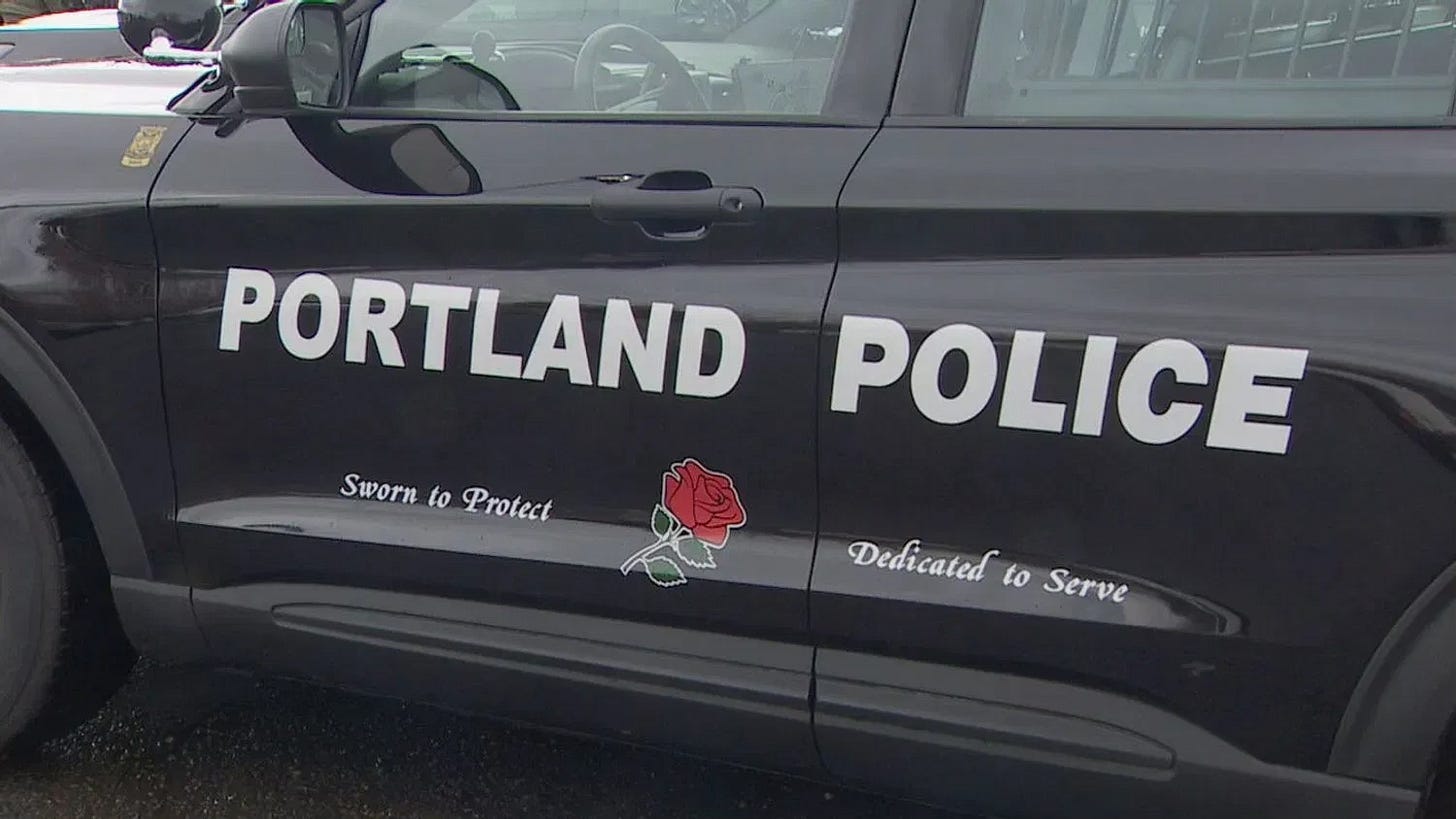Why Portland police officers appear scarce on the streets
Out of 798 sworn officers, only 35–45 are actively patrolling at any given moment
Portland has 798 sworn police officers. Yet the question persists: Why aren’t they more visible?
According to Portland Police Bureau statistics, out of those 798 sworn officers, only 35–45 are actively patrolling the streets at any given moment. That equates to one patrol officer for 14,000–18,000 residents. Understanding why requires looking closely at how the bureau’s staffing is organized, how shifts are structured and how officers’ duties limit the number available for front-line patrol.
Portland Police’s 798 Officers are assigned to three general assignments.
316 are patrol officers.
Another 231 officers are the same rank as patrol officers. They are assigned elsewhere: investigations, specialty units, traffic, administrative posts and federal task forces.
251 are higher-ranking officers who are assigned to supervisory, investigative or specialized positions.
The 231 officers fill roles that support the bureau but do not contribute directly to patrol coverage:
Detective and investigative units: Homicide, robbery, property crimes, vice, sex crimes and the gun violence unit.
Neighborhood and community policing: Neighborhood Response Teams, bike patrols and walking beats.
Specialized enforcement: Traffic division, K-9 handlers, transit police, air support and the Focused Intervention Team.
Tactical and emergency: SERT (SWAT-style response), the Rapid Response Team and crisis negotiation.
Administrative and training: Firearms and tactics instruction, background checks, wellness, and property room management.
School and youth programs: School liaisons and youth services.
Federal and regional task forces: Partnerships with the FBI, U.S. Marshals, DEA, ATF and the Multnomah County DA’s office.
The 251 higher-ranking officers are supervisors, or hold specialized jobs such as detectives and criminalists. (criminal forensic scientists)
1. Supervisory Ranks
Sergeants (106): First-line supervisors overseeing patrol officers, detectives or specialty units. They manage roll calls, assignments, field oversight and reviews.
Middle and upper management, responsible for precinct leadership, strategy, discipline, budgeting, and interagency coordination. Lieutenants (27), captains (10), commanders (6), assistant chiefs (3), deputy chief (1), chief (1):
2. Investigative and Forensic Roles
Detectives (83): Handle case follow-up, prepare warrants, interview witnesses and work with prosecutors.
Criminalists (14): Forensic specialists who process evidence, analyze crime scenes and testify in court.
Patrol staffing is further reduced by how shifts are scheduled. Portland operates on three 10-hour shifts per day:
Day: 6 a.m. – 4 p.m.
Afternoon/evening: 2 p.m. – Midnight
Night: 10 p.m. – 8 a.m.
The overlap on the shifts is on purpose. Eight-hour shifts are not feasible. Each shift begins with a 15–30 minute roll call. Police engagements do not end based on the clock. The staggered scheduling allows for continuous presence on the street.
Theoretically, if all 316 patrol officers were spread evenly, that would place about 105 officers per shift.
Because each officer works four days per week, the realistic average is ≈60 officers scheduled per shift.
Accrued leave reduces availability even more:
Sick leave: ≈10 shifts per year.
Vacation leave: ≈11–21 shifts per year.
Together, this cuts coverage by ≈10–15%, lowering the per-shift average from ≈60 to ≈51–54 officers.
Even out of those 51–54 scheduled officers, many are unavailable for street patrol because they are:
Transporting suspects
Guarding patients in hospitals (mental health holds, shooting victims, overdoses)
Securing crime scenes
Writing reports and paperwork
Testifying in court (trials, hearings, grand juries)
Attending mandatory training (firearms, tactics, legal updates, crisis response)
Assigned temporarily to community meetings or outreach
This leaves only 35–45 officers truly available citywide to respond to 911 calls at any given moment.
Portland’s 636,000 residents rely on just 35–45 officers, or one per 14,000–18,000 citizens.
The Pearl District’s 11,000 residents and the Northwest District’s 13,000 residents together would statistically share the attention of a single patrol officer.





Thanks again Curtis excellent reporting!
I took a look for comparison to similar cities and here’s what I discovered:
Portland has by far the weakest patrol presence — about 3x fewer patrol officers per resident than Denver, and likely less than Seattle too.
• Portland: ~0.51 per 1,000 (316 patrol cops for ~615k people)
• Denver: ~1.47 per 1,000 (1,053 patrol cops for ~716k people)
• Seattle: ≤ ~1.24 per 1,000 (real patrol number likely much lower)
⚠️ No wonder Portland feels lawless. Fewer cops, more crime.
Crime rates:
• Portland: 7.23 violent + 59.76 property = 66.99 per 1,000
• Seattle: 7.77 violent + 51.10 property = 58.88 per 1,000
• Denver: 5.3 violent + 40.1 property = 45.4 per 1,000
📉 Portland’s crime stats are fake comfort — the city looks “safer” on paper only because citizens are too burned out to bother reporting what never gets addressed.
Mayor Wilson talks about rebuilding the police with more funding and recruitment, but there’s no clear plan to put more patrol cops on the street. His public safety and homelessness strategies sound good at a high level but are light on specifics, timelines, and accountability.
Bottom line: The leaders elected to keep our community safe are failing the very people who voted them in.
When I chaired the Livability and Safety Committee of the Pearl District Neighborhood Association in the late 2010s, I investigated where Portland ranked in police officers per capita compared with other cities of Portland’s size, as our committee could not understand why the Pearl District neighborhood seldom saw a Portland police officer on foot or why the response time to non-emergency calls often took hours. The data showed that Portland ranked dead last in this category of police staffing.